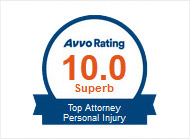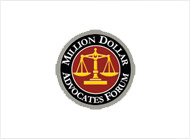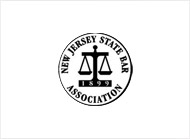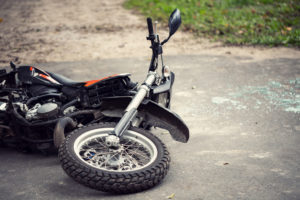 According to statistics gathered by the National Highway Traffic Safety Administration, there was a significant increase in motorcycle-related deaths from 2014 to 2015 and the annual number of fatalities has remained at the higher level in subsequent years. Officials say the increase is primarily the result of cheaper gasoline costs, which put more people on the road for longer periods of time.
According to statistics gathered by the National Highway Traffic Safety Administration, there was a significant increase in motorcycle-related deaths from 2014 to 2015 and the annual number of fatalities has remained at the higher level in subsequent years. Officials say the increase is primarily the result of cheaper gasoline costs, which put more people on the road for longer periods of time.
Here are some of the relevant statistics gathered by the NHTSA:
- Deaths jumped more than 9% from 2014 to 2015, from 4,594 to 5,029. 2016 saw the total deaths jump to 5,286, a 5.1% increase
- Of the total number of deaths in 2016, 4950 (94%) were operating the motorcycle and 336 (6%) were passengers
- More than nine of ten motorcycle fatalities in 2016 were on two-wheeled bikes—93%
- Motorcyclists were involved in 14% of all traffic fatalities
- Motorcycle accident injuries went up nationwide from 2014 to 2015—from 88,000 to 92,000
The statistics also confirm that motorcycle accidents are inherently more dangerous that other motor vehicle accidents. Per 100,000 registered vehicles, there were more than 58 fatalities involving motorcycles, compared to less than 10 per 100,000 passenger vehicles and less than 8 per 100,000 light trucks. Experts say that, per vehicle mile traveled, motorcycles are 28 times more likely to lead to a traffic death.
The statistics also indicate that weather conditions seldom contributed to a fatal motorcycle crash—less than 3% of motorcycle-related fatalities were in rain or bad weather.
Another interesting statistic supports the perception that motorcyclists as a group are getting older. In 2016, 49% of all motorcycle fatalities involved victims over the age of 40. Just 10 years earlier, the average age at the time of death was 39. In 2016, it was 43.
Contact the offices of Gregg A. Wisotsky, Esq. Partner, Javerbaum Wurgaft Hicks Kahn Wikstrom & Sinins, PC
We offer a free phone consultation to every prospective client. For a complimentary evaluation of your case, contact our office online or call at 973-241-7468. We will come to your home or the hospital to meet with you, if necessary. All major credit cards are accepted.



 Under the laws of the state of New Jersey, it is illegal to produce, possess, sell of distribute any pornographic image that portrays or exploits someone under the age of 18. In fact, there are state and federal laws that lead to serious penalties for involvement in child pornography operations. In New Jersey, for example, it’s considered endangering the welfare of children to photograph or take footage of a minor in a proscribed sexual act, or simulating a prohibited act. The law forbids any attempt to convey those images to another person, including digital transmissions.
Under the laws of the state of New Jersey, it is illegal to produce, possess, sell of distribute any pornographic image that portrays or exploits someone under the age of 18. In fact, there are state and federal laws that lead to serious penalties for involvement in child pornography operations. In New Jersey, for example, it’s considered endangering the welfare of children to photograph or take footage of a minor in a proscribed sexual act, or simulating a prohibited act. The law forbids any attempt to convey those images to another person, including digital transmissions.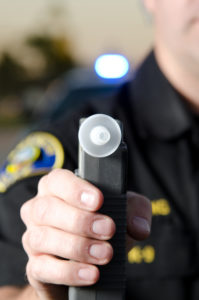 When you’ve been pulled over by law enforcement officers in New Jersey, you can be almost certain that the first question you’ll face is some variation of “have you had any alcoholic beverages today?” If your answer is yes, or if the officer has any reasonable suspicion that you may be impaired, the next step will typically involve some type of field sobriety test, so that the officer can either establish probable cause to administer a blood alcohol test or send you on your way.
When you’ve been pulled over by law enforcement officers in New Jersey, you can be almost certain that the first question you’ll face is some variation of “have you had any alcoholic beverages today?” If your answer is yes, or if the officer has any reasonable suspicion that you may be impaired, the next step will typically involve some type of field sobriety test, so that the officer can either establish probable cause to administer a blood alcohol test or send you on your way. When you’ve been hurt by the careless or wrongful act of another person, you have a right to seek compensation for your losses. But what if that person is what the law considers “judgment proof”? For example, what if you were injured by a person who has no insurance and who has no assets. You may be able to get a verdict, but have little hope of ever collecting on that judgment.
When you’ve been hurt by the careless or wrongful act of another person, you have a right to seek compensation for your losses. But what if that person is what the law considers “judgment proof”? For example, what if you were injured by a person who has no insurance and who has no assets. You may be able to get a verdict, but have little hope of ever collecting on that judgment.


